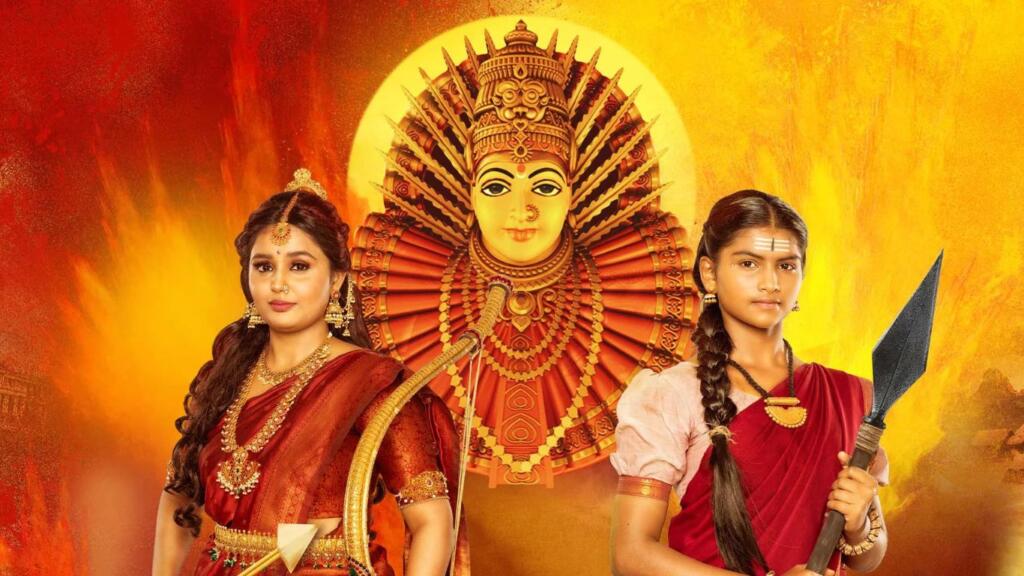India, a land steeped in culture and tradition, finds divinity not only in temples and rituals but also in its tales of gods, sages, and mortals intertwined with sacrifice, devotion, and redemption.
These ancient chronicles, passed down through generations, are not folklore; they reflect the cultural and moral values that have shaped India. In Southern India, where these recitals and daily life coexist seamlessly, one of the most beautiful symbols of faith is the goddess Yellamma, a form of Renuka. Her tale is deeply human and continues to inspire worship, while evolving to address the challenges of modern times.
The Roots of Renuka
Renuka, as told in epics like the Mahabharata and various Puranas, was the wife of the sage Jamadagni and the mother of Parashurama, the fierce warrior-sage. Her story is one of unwavering devotion, but it also speaks to the frailty of human desires. One day, while fetching water from the river, Renuka saw a king sporting with his queen, and for a fleeting moment, she felt desire. This momentary lapse, though brief, made her lose the divine power she had possessed—breaking the water pot she carried and shattering her chastity.
When her husband Jamadagni realized what had happened, his anger was swift and severe. He commanded each of his sons to behead their mother for what he deemed a sin. Only Parashurama obeyed, and in return, Jamadagni granted him a series of boons: Renuka was brought back to life, the family was absolved of the incident, and Parashurama was promised victory in all battles. This story is not one of punishment but of rebirth and forgiveness—qualities that would come to define Renuka’s divine form as Yellamma.
The Transformation into Yellamma
In the southern states of Karnataka, Maharashtra, and Andhra Pradesh, Renuka’s story evolved as she became Yellamma, a goddess worshipped by those on the fringes of society. According to one local legend, Parashurama accidentally placed Renuka’s head on the body of a low-caste woman, while the other woman’s head was attached to Renuka’s body. This divine error became symbolic: Yellamma transcended caste and class, embodying both the pure and the impure, the privileged and the downtrodden.
Her temples, especially the shrine at Saundatti in Karnataka, became places of refuge for the marginalized—women, the poor, and those abandoned by society. Devotees saw in her story a goddess who understands human frailty, offers redemption, and demands service not through rituals alone, but through acts of compassion toward others.
The Jogappas and Jogathis
In the vibrant traditions surrounding the worship of Yellamma, devotees adorn their foreheads with turmeric (haldi) and vermilion (kumkum). These simple decorations reflect the community’s preference for modesty over extravagance, as followers typically avoid expensive jewelry. Instead, they create crowns, earrings, and necklaces from cowrie shells, embodying both resourcefulness and spiritual devotion. Some devotees even forgo wearing ornaments entirely, demonstrating humility in their worship.
Among the male followers are the Jogappas, who often blur the lines of gender expression. While many dress in men’s clothing, several adopt the attire and mannerisms of the Jogathis, symbolizing the sons of Renuka who, according to legend, lost their virility. Jogappas perform feminine gestures, which sometimes attract attention from young men. These interactions often provoke taunts, whistles, and mockery from onlookers, but the devotees remain focused on their rituals and practices.
It is essential to distinguish Jogappas from Kinnars (Eunuch or third gender), who have historically existed as a distinct social group. Hijras, often born with ambiguous genitalia or undergoing castration, form tight-knit communities that sustain themselves through ritual performances. Unlike Jogappas, who channel spiritual energy into their rituals, Hijras operate within a framework of entertainment and livelihood, often leveraging provocative performances to elicit money.
One of the most striking elements of the Yellamma tradition is the way Jogathis perform. They carry brass busts of Yellamma or elaborately decorated vessels and baskets on their heads—balancing them so skillfully that the objects seem to merge with their bodies. These icons, adorned with colorful fabrics and fresh flowers, are believed to carry divine energy. Their movements align with rhythmic drum beats played by fellow devotees as they dance, creating an immersive spiritual experience.
Yellamma’s Relevance in the Contemporary World
However, the Yellamma ritual has time and again, faced targeted campaigns. Governments across several states have banned these processions alleging it to be exploitative. However, the ban has garnered resentment from the Yellamma community. Despite efforts to ban certain practices, the Yellamma ritual remains an enduring part of the region’s spiritual landscape. For many, these rituals are not mere performances but acts of devotion and identity.
